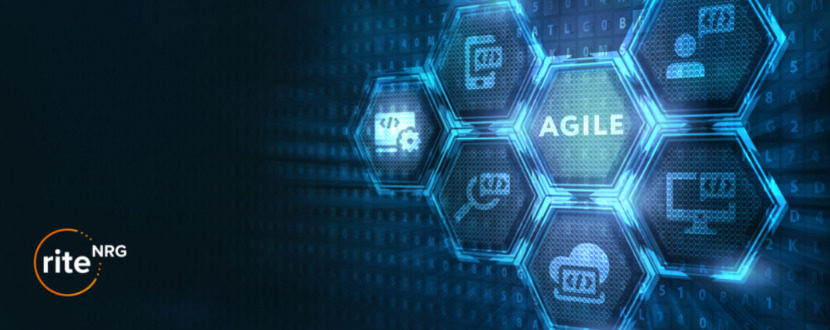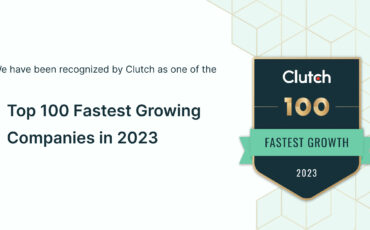In the last few years, Agile has become one of the most famous software development approaches. It’s not just a framework, it’s a mindset under which IT teams achieve success and deliver it to the clients. The approach has already shown its efficiency in countless instances – Agile can benefit both users and developers. Let’s explain how and what actually the agile software development methodology is.
Agile software development – what is it?
Agile software development refers to methods, principles, and practices that provide value quickly and efficiently to customers. According to this mindset, self-organizing and cross-functional teams work together to create solutions. Agile software development means splitting development tasks into smaller, manageable parts called iterations. Iterations are built, tested, and deployed in time-box periods. Requirements evolve through collaboration. Agile software development stands in contrast to the once-dominant Waterfall methodology. It helps sidestep the risk of wasting money based on mistaken assumptions of functionalities and features users need and want.
Putting all together, the approach is based on two main principles: iteration and collaboration. Instead of setting large development goals, developers focus on implementing new features one by one, over a short timeline. Digital products evolve iteratively, and, thanks to close, cross-functional collaboration, businesses avoid implementing features that are of little value to users. It is said that the Agile software development methodology is the key to surviving in the modern market, especially in dynamic and highly competitive industries.
Main advantages and disadvantages of Agile for software development
Software development teams generally prefer to work with an Agile methodology because it usually leads to better processes and better software products. Here are the most important benefits of implementing Agile methods in your development processes.
Product quality is better instantly
As the Agile software development life cycle is based on sprints, you get the deliverable by the end of each sprint. Each sprint ends with a clear and tangible result that improves the quality of your product.
Agile leads to customer satisfaction
Customers receive a well-designed and thoroughly tested digital product The team can precisely identify problems without hassle. Application enhancements and updates are implemented much faster.
You reduce risk
Thanks to manageable application update cycles, the risk is reduced. As you collect feedback after each iteration, the chance of creating an unwanted product nobody needs is minimized.
Flexibility increases
Especially when compared to the rigid Waterfall methodology. You can introduce changes at every step of the way so you can easily adapt to the newly emerging needs. At the same time, the integrity of the development process is not put at risk.
Cooperation
In the Agile approach, different people are involved in each iteration. All parties can come up with ideas and verify how the work is going. Agile promotes collaborative efforts and creativity between team members.
As you can see, it is worth switching to Agile methods. What about the cons, then? Does Agile methodology have any?
It requires effort
Planning iterative update cycles takes more work than identifying a large number of features to implement over a broad timespan. Collecting feedback is also time-consuming.
You lose the big picture
When you constantly implement minor new features, there is a chance you never add up meaningful application change.
Lack of predictability
When you switch to Agile, you have to accept a certain level of uncertainty. Sometimes, it may cause anxiety, especially if your business relies on the successful completion of the project. There are no specific deadlines and costs so it’s difficult to clarify how long each iteration will last and how much a total project will cost.
What does an Agile workflow look like?
The Agile software development life cycle usually consists of 6 phases:
- Ideation / concept – during this phase, you define the business scope for each of the project ideas. Also, you determine the time and set of tasks to execute the projects. It is important to keep the requirements to a minimum as they can be added in later steps.
- Inception where you create your sprint teams. A product owner checks their colleagues’ availability and picks the best people for the project. They can start working on the design process.
- Iteration. Once the team with a clear objective is created, you can start working on the first iteration. The product goes through many rounds of improvements but the first one usually includes minimum functions. Iteration is usually the longest phase. It’s a cornerstone of Agile software development. It allows developers to create software quickly and make improvements to increase customer satisfaction.
- Release. After a series of improvements, the product can finally be passed into the production phase. During this stage, it is thoroughly tested to ensure that the software is fully functional and that the code is clean.
- Production. This phase means a full deployment. The product is available to customers.
- Maintenance – ongoing support to keep the system running smoothly and resolve any new bugs.
Main types of Agile methodologies
There are different types of Agile methodologies – Agile encompasses frameworks and practices that represent various nuances of how the methodology is approached. There are over fifty formally detailed Agile frameworks but let’s focus on the most established ones.
Scrum
This framework is based on a repetitive approach. It emphasizes continual improvement for customer satisfaction. The workflow consists of the product backlog, planning sprint, sprint backlog, sprint, routine scrum meetings, sprint reviewal, and internal scrum meetings. Scrum is the most used Agile process framework in the context of software development.
Kanban
This workflow is based on the lean development process. Kanban isn’t iterative and it’s less structured. The framework focuses on delivering quality continually through effective team collaboration. Kanban is a framework for ‘just in time’ work processes. In software development, Kanban is a visualization system with a Kanban board that consists of three workflow states: to do, in progress, and done.
Feature-Driven Development
FDD is an iterative and progressive workflow model that is primarily focused on features. It goes through the 5 stages: develop the entire model, develop the listed features, feature planning, feature designing, and feature building.
Crystal
It’s a set of various software methodologies. Crystal is human-centric – it considers people as the most important asset in system development. The framework focuses on individuals and their interactions rather than processes and tools. Also, it offers guidelines for collaboration and communication.
Extreme Programming
XP focuses on continual improvement through customer feedback. It comprises four stages: coding, testing, listening, and designing. It’s not a traditional Agile framework because it focuses on the technical aspects of software development and the implementation of specific practices.
Best practices for Agile software development organization
When you decide to switch to Agile methodology, you should have the following best practices in mind:
- Form self-organizing teams. Choose the way they will work and who will be responsible for what. It’s not the management’s role to assign tasks and look over their shoulders. Each member of the team should be confident in their work and share responsibility. If the outcome misses the mark the entire team learns and adapts from their mistake.
- Prioritize tasks in the product backlog. There are many product backlog prioritization techniques – among the others, the HIPPO, MoSCOW, and Kano models. In all techniques, the product owner changes and sets the priority of the backlog item list based on stakeholder feedback and project circumstances.
- Work together daily. Teams can only be successful when they collaborate as a cohesive unit. Teamwork quality, team performance, and project success are strongly related to each other. Don’t waste it. The Agile approach puts face-to-face communication first. It builds trust, opens gates for feedback, and creates conversation among teammates.
- Don’t forget to collaborate with the customer. An Agile team means near-constant communication with the customer, clarifying expectations, and collaborating on fixes. It leads to promoting creativity and better quality. Customer satisfaction is the first and foremost priority in the Agile approach, after all.
Grow your business with successful Agile methods
Agile is not for everyone. However, it works perfectly for startups because it’s flexible and customer-oriented. It suits adaptable projects managed by teams with strong leadership skills and fluid communication styles. If you want to implement Agile methods in your organization, we’ll be happy to support you.





